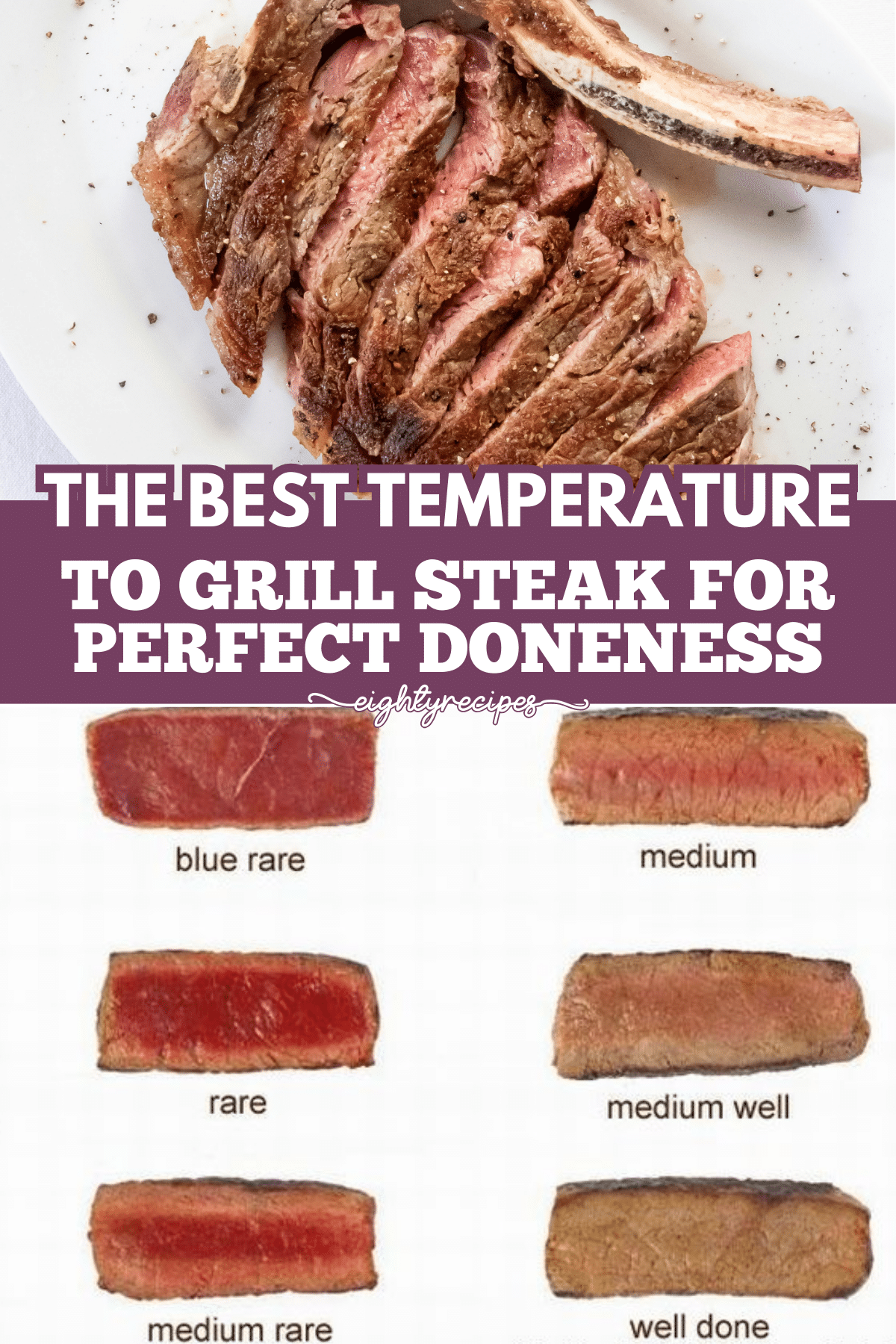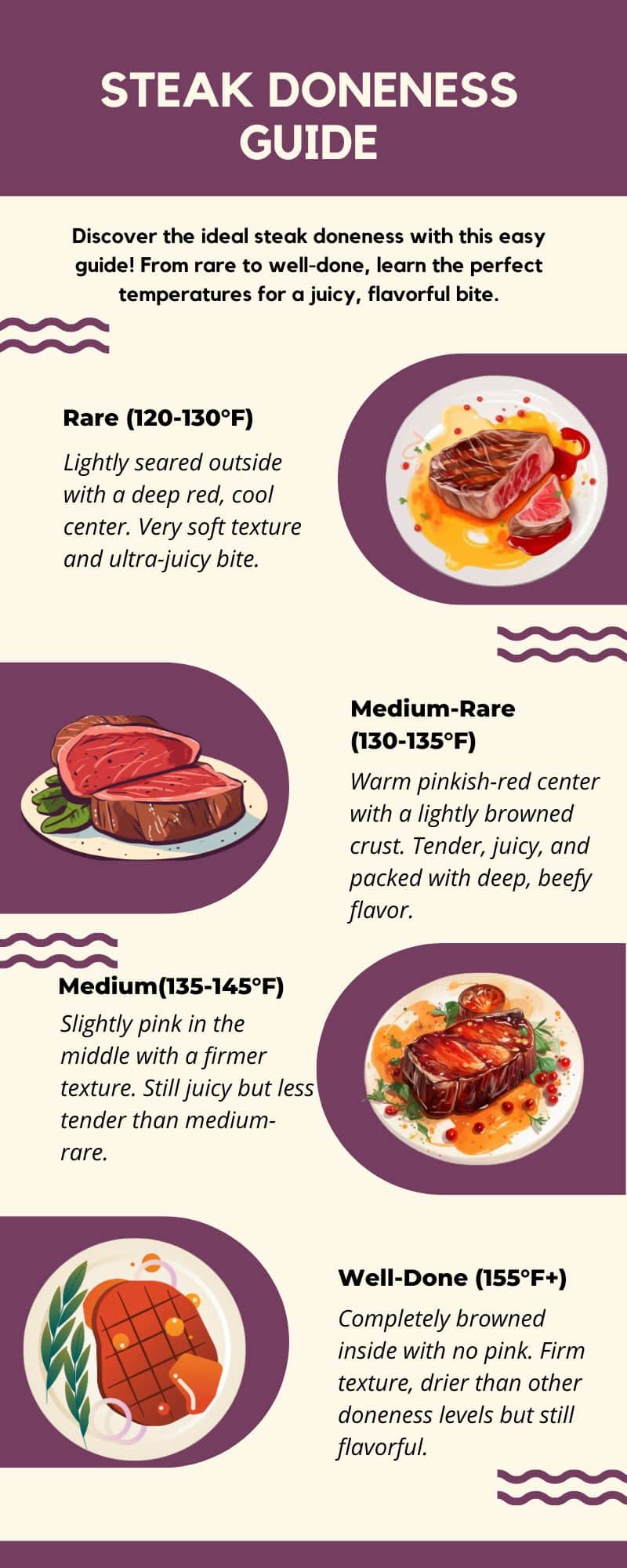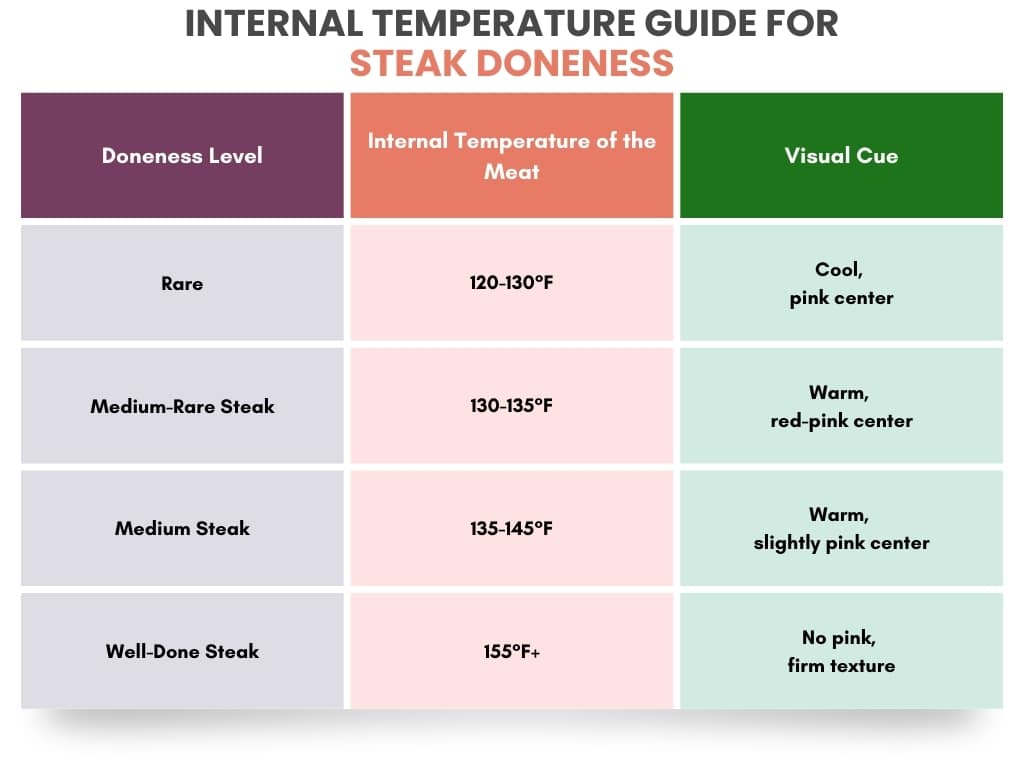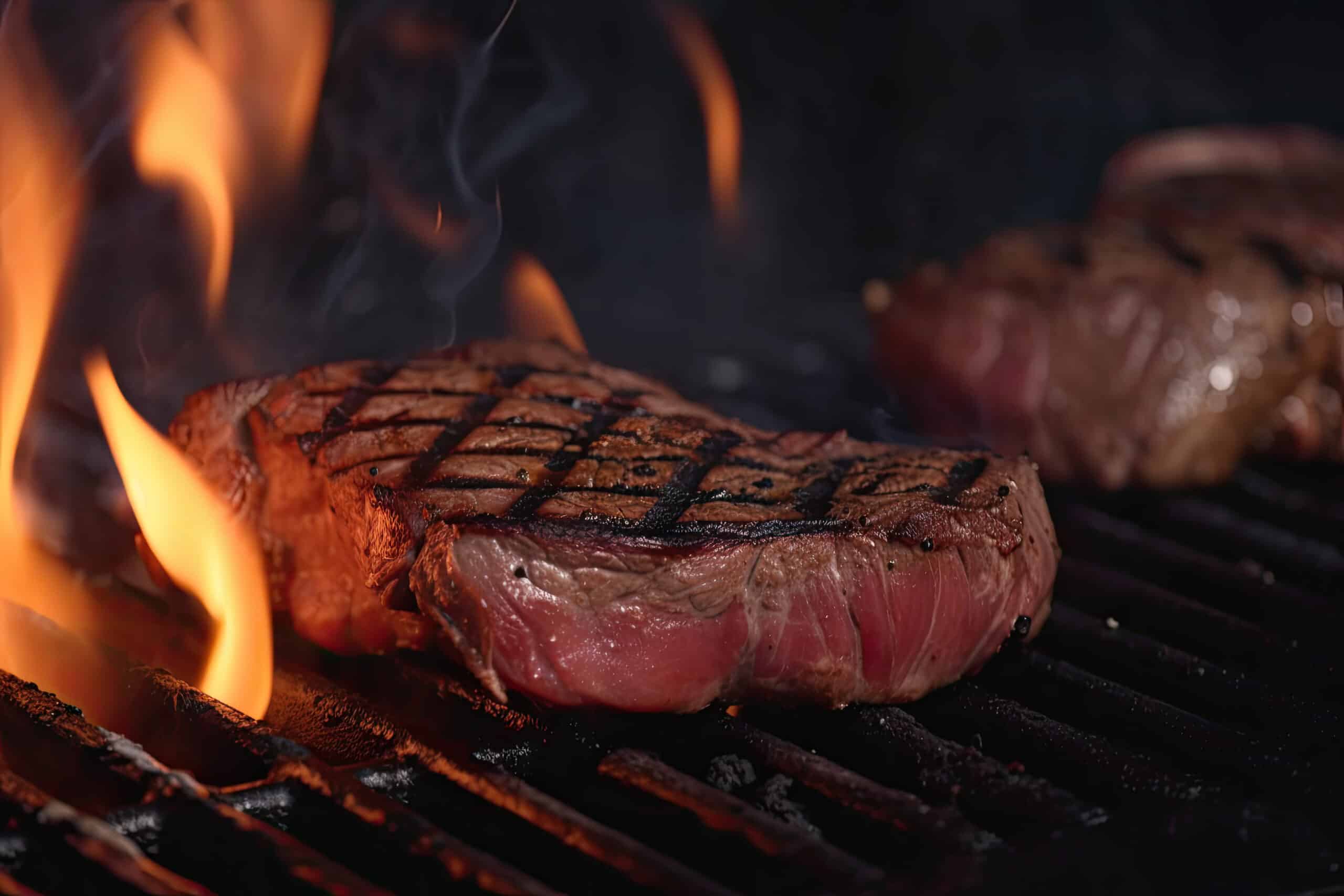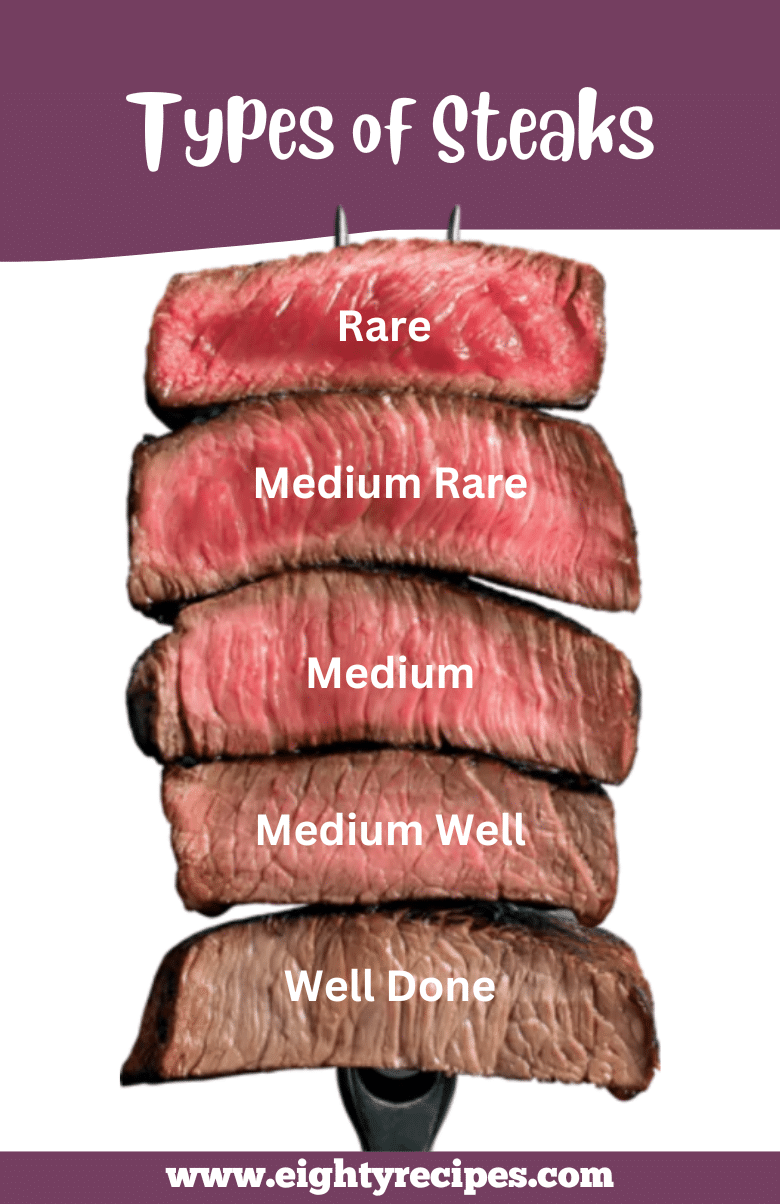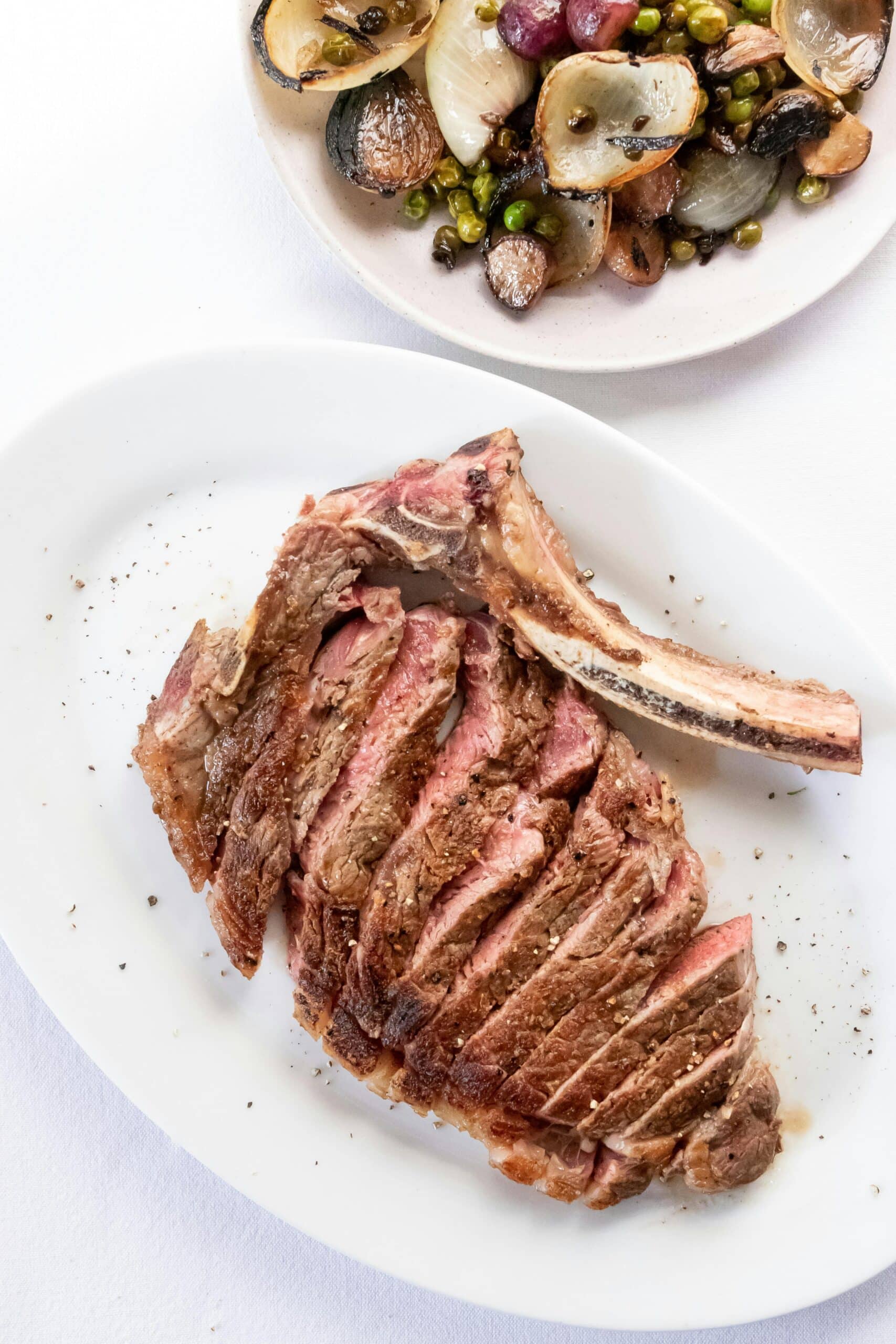Grilling steak isn’t just about throwing a piece of meat on a hot grill—the secret to a perfect steak is getting the grill temperature and internal temperature just right. Whether you’re using a gas grill, charcoal grill, or pellet grill, understanding indirect heat and direct heat can make or break your steak. In this guide, we’ll cover everything from steak thickness to the level of doneness to ensure you achieve a juicy, flavorful steak every time.
Disclosure: This post contains affiliate links. If you purchase through these links, I may earn a small commission at no extra cost to you. I only recommend products I trust and use in my own kitchen.
Quick Breakdown
Why Temperature Matters When Grilling Steak
The biggest reason steaks turn out dry or uneven is simple: the grill is too hot (or not hot enough) for the cut you’re cooking. When you control the grill temperature and use heat zones, you can get a great crust without overcooking the center.
The Best Grill Temperatures for Steak
Getting the grill temperature just right is the key to a perfectly cooked steak. Too hot, and you’ll scorch the outside before the inside is done. Too low, and you’ll miss out on that beautiful sear. Whether you’re using a gas, charcoal, or pellet grill, knowing the right heat level ensures a juicy, flavorful bite every time. Let’s break down the ideal temperatures for each doneness level so you can grill with confidence!
If you’re wondering about the best temperature to grill steak, it really comes down to high heat for searing paired with the right internal temp for your preferred doneness.
Don’t have an outdoor grill? No problem! The Ninja Griddle and Indoor Grill lets you achieve restaurant-quality steaks indoors with precise temperature control. Perfect for grilling year-round without worrying about the weather!
Preheating Your Grill
- Gas Grill: Preheat to 450-500 degrees for a nice sear.
- Charcoal Grill: Wait until coals turn white-hot before grilling.
- Pellet Grill: Set to 450°F to get that smoky flavor and perfect crust.
Setting Up Your Grill for Steak Perfection
Whether you’re working with a gas, charcoal, or pellet grill, creating distinct heat zones is the secret trick for steak success. This dual-zone setup lets you achieve a gorgeous sear while also ensuring your steak cooks evenly without burning.
- Charcoal Grill: Once your coals reach that white-hot glow, arrange them to one side of the grill. This gives you a hot zone for searing and a cooler zone for finishing—ideal for thicker cuts.
- Gas Grill: After reaching your target temperature, turn one burner to high and keep the other at medium or even off. Place steaks directly over the high heat for a robust sear, then move them to the cooler side to finish cooking gently.
- Pellet Grill: Most pellet grills naturally run a bit more even, but you can still take advantage of indirect heat by placing your steak away from the direct flame after the initial sear.
This two-zone method doesn’t just sound fancy—it helps you control doneness and ensures you end up with a steak that’s charred on the outside and just how you like it on the inside. So, go ahead, impress your guests (and yourself) with that effortless steakhouse finish right in your backyard.
Internal Temperature Guide for Steak Doneness
- Rare (120-130°F): Lightly seared on the outside with a cool, pink center. The texture is soft and incredibly tender.
- Medium-Rare (130-135°F): Warm with a red-pink center. Juicy and flavorful, offering the perfect balance of tenderness and taste.
- Medium (135-145°F): Warm throughout with a slightly pink center. Firmer than medium-rare but still retains good moisture.
- Well-Done (155°F+): Fully cooked through with no pink inside. Firm texture with less juice but is still packed with flavor.
Pro Tip: Use an instant-read thermometer to check the internal temp of your steak. Remove it from the grill 5-10 degrees before the target temperature, as it will continue to cook while resting.
To get that perfect doneness every time, a reliable instant-read thermometer is a must. I recommend this high-accuracy digital meat thermometer for quick and precise readings.
Direct vs. Indirect Heat for Grilling Steak
Using the right cooking method is just as important as hitting the target temperature. Each method impacts the texture, flavor, and juiciness of your steak, so choosing the right one can make all the difference.
Direct Heat (Searing Over High Heat)
Best for: 1-inch steaks or thinner steaks like Flank Steak or Skirt Steak.
Direct heat is all about high-temperature, fast cooking. By placing the steak directly over the flames or hot coals, you achieve that rich, flavorful crust thanks to the Maillard reaction. This method locks in juices quickly, delivering a beautifully charred exterior while keeping the inside tender.
- Grill grates should be piping hot before placing the steak.
- Sear for 3-4 minutes on each side for a perfect medium-rare steak.
- Produces a nice char and the famous Maillard reaction for deep flavor.
Want a steakhouse-quality sear at home? A cast iron grill grate holds heat better than standard grates, helping you achieve that beautiful Maillard reaction. I love using this heavy-duty cast iron grate for deep, even caramelization.
Optional: Grilling Steak Directly on Hot Coals (Caveman-Style)
Best for: Adventurous grillers and thick, flavorful cuts like Ribeye or Porterhouse.
If you’re feeling bold (and want to channel your inner steakhouse chef), try grilling your steak right on the hot coals—no grates required! This primal technique, sometimes called “caveman-style,” places your steak in direct contact with glowing hardwood charcoal.
How it works:
- Rake your charcoal into an even, blazing-hot bed.
- Gently lay your seasoned steak straight onto the coals.
- Sear for about 2-3 minutes per side, brushing away any ash as needed.
Why try it?
Cooking steak directly on the coals gives you an unmatched smoky flavor and an irresistibly crisp crust. The juices stay locked in, while the outside develops a char that’s hard to achieve any other way. Just remember to use natural lump charcoal (not briquettes with additives) for the purest taste.
After grilling, let your steak rest for a few minutes, brush off any lingering ash, then slice and savor! This technique brings a fun, rustic flair—and serious flavor—to your next backyard BBQ.
Indirect Heat (Slow Cooking for Thicker Steaks)
Indirect heat is the go-to method for thicker steaks that need longer cooking times. Instead of placing the steak directly over the flames, it’s cooked off to the side, allowing for gentler, even cooking. This helps prevent the outside from burning before the inside reaches the desired temperature.
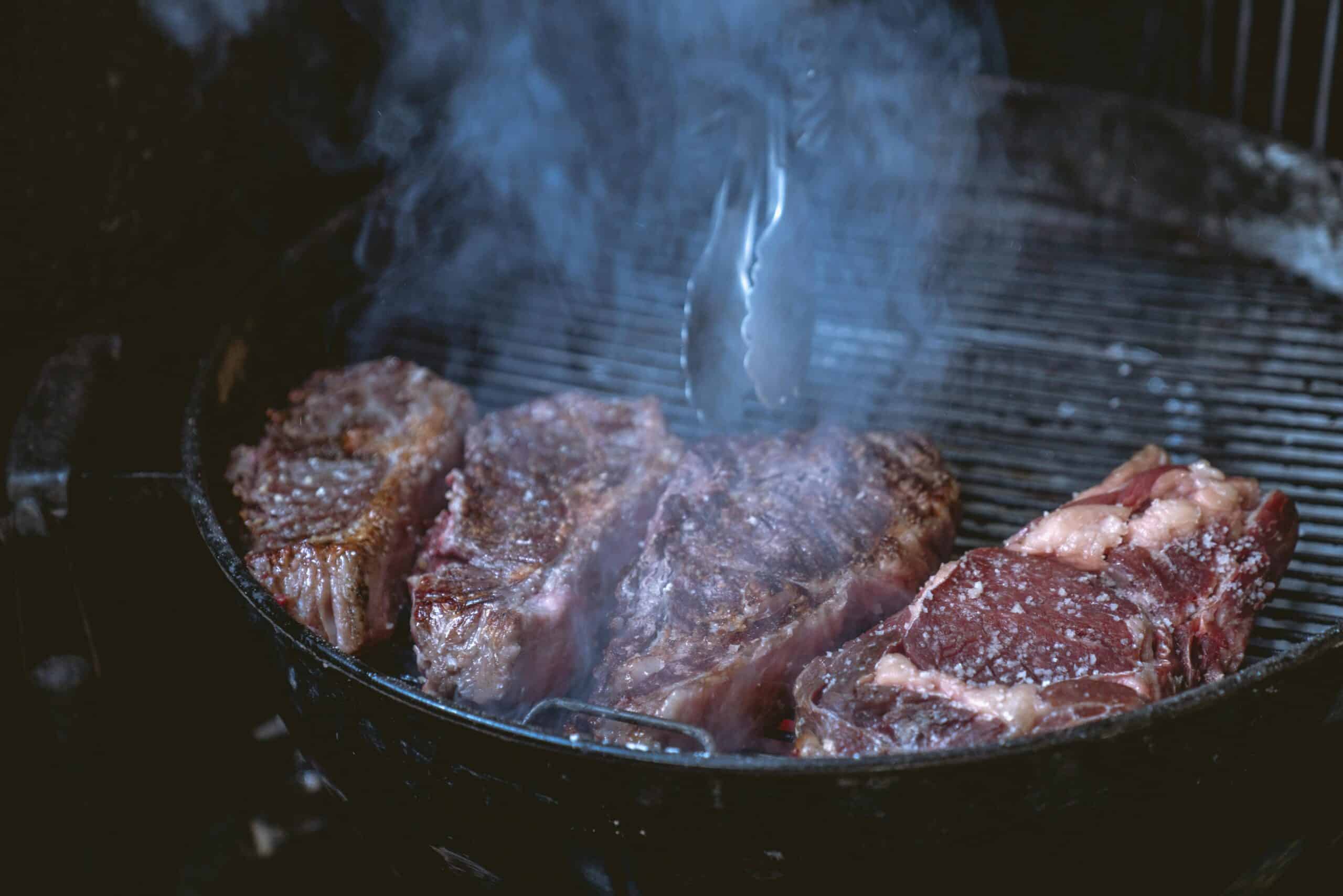
- Use the reverse sear method: Start over indirect heat to reach the target temperature, then finish with a quick sear over high heat.
- Recommended for 2-inch steaks or thicker cuts to ensure even doneness.
- Helps retain moisture while still achieving a rich crust at the end.
Pro Tip: When in doubt, start low and finish with high heat—this way, you get the best of both worlds!
Step-by-Step Guide to Grilling the Perfect Steak
Prep Time: Season & Rest Your Steak
- Take steak out of the fridge 30–45 minutes before grilling to reach room temperature.
- Pat steaks dry with paper towels to remove excess moisture.
- Season steak generously with kosher salt, black pepper, and simple seasoning for natural flavor.
A great steak doesn’t need much—but the right seasoning takes it to the next level. This steak seasoning blend adds just the right balance of salt, pepper, and bold flavors.
Dry Brine for Maximum Flavor
- For next-level flavor and crust, try dry brining your steak: after seasoning with kosher salt and black pepper, set the steak (uncovered) on a wire rack in the fridge for anywhere from 1 hour up to 48 hours.
- This extra step gives superior results—the salt draws out excess surface moisture, which evaporates in the fridge. As the steak rests, the seasoning works its magic, penetrating deep into the meat.
- When it’s time to grill, you’ll notice the steak is drier on the outside, which is exactly what you want. Less surface moisture means a better, more caramelized crust as soon as it hits the heat.
Pro Tip: If you want a steakhouse-quality crust and rich, beefy flavor, let your dry-brined steaks return to room temperature before grilling. This helps them cook evenly and delivers that irresistible sear every grill master aims for!
Preheat & Clean Grates
- Use clean grates to prevent sticking.
- Brush vegetable oil or olive oil onto the grill grates to create a non-stick surface.
Sear Over Direct Heat
- Sear for 3-4 minutes per side for a perfect crust.
- For thicker steaks, sear for 4-5 minutes and then move to indirect heat.
- Ensure steak thickness matches the best grill temperature.
A good set of grill tongs makes flipping steaks easier without losing juices. This stainless steel grill tool set is a must-have for effortless grilling.
Check the Temperature
- Use a digital meat thermometer or an instant-read meat thermometer.
- Check the steak temperature chart to match the level of doneness.
- Place the steak on the side of the grill when needed for slower cooking.
Let Your Steak Rest
- Rest for 5-10 minutes to lock in juices.
- Cover loosely with aluminum foil to keep it warm.
How to Slice Your Steak for Maximum Tenderness
- Slice against the grain—you’ll notice lines running through the meat (that’s the grain). Cut perpendicular to these lines.
- Slicing this way shortens those muscle fibers, making each bite more tender and easier to chew.
- Once sliced, drizzle any extra herb butter or pan juices over the top for an extra boost of flavor.
Now dig in—your perfectly cooked, perfectly sliced steak awaits!
Pro Tips for Extra Flavor
- ✅ Use garlic herb butter for an extra flavor boost.
- ✅ The reverse sear method ensures well-cooked steak without overcooking.
- ✅ Use flaky salt or coarse sea salt to enhance the natural flavor.
- ✅ Flip steaks only once to get grill marks and a juicy center.
- ✅ For juicy steaks, store leftover steak in an airtight container and reheat over medium-high heat.
FAQ: Common Steak Grilling Questions
What’s the best steak thickness for grilling?
A 1-inch steak is perfect for quick grilling, while thicker steaks need the reverse sear method.
How long should I grill a steak?
4-5 minutes per side for medium steak. 3-4 minutes per side for medium-rare steak.
What’s the best oil to use?
Steak with avocado oil or vegetable oil is best for high-heat grilling.
How do I keep my steak from drying out?
Steaks dry out if overcooked—use an instant-read thermometer and let it rest for 5-10 minutes.
Final Thoughts: Grill a Perfect Steak Every Time
Mastering the best temperature to grill steak ensures a flavorful, juicy, and restaurant-quality experience. Whether using a gas grill, charcoal grill, or pellet grill, following the right grill temp, cooking time, and resting period makes all the difference.
Ready to level up your steak game? Try out these Delicious Steak Recipes and let me know your favorite grilling method in the comments!
Related Recipes:
- The Best Ribeye Steak Recipe
- Easy Steak Marinade for a Flavorful Steak
- Perfect Grilled Strip Steak Recipe

